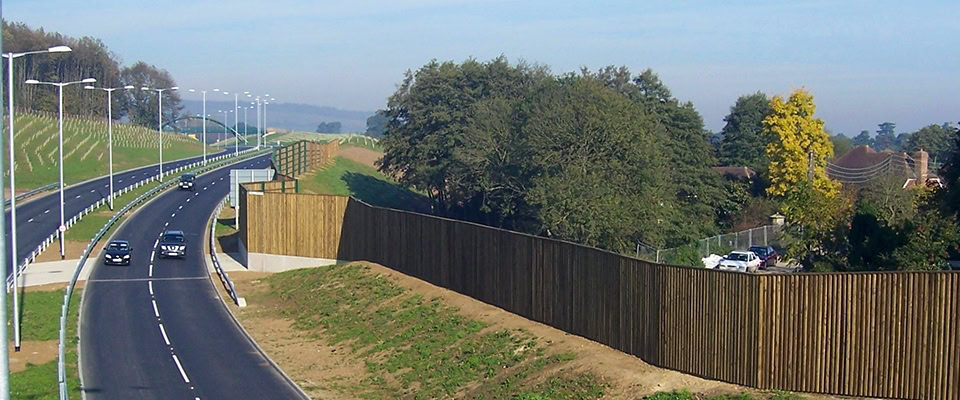
Walk through any major city and you’ll see construction everywhere — new skyscrapers rising, roads being upgraded, and entire districts being redeveloped. In bustling urban hubs like Singapore, construction is a sign of progress. But behind that progress lies one of the industry’s biggest challenges: managing noise.
That’s where noise barrier construction comes in. Far from being just a visual enclosure, noise barriers play a vital role in keeping projects compliant, efficient, and harmonious with the surrounding community.
Here’s a look behind the scenes at how these barriers actually make urban construction not only possible but sustainable in the long run.
The Noise Problem in Urban Environments
Cities are noisy by nature — traffic, people, and public transport already contribute to a constant hum of sound. Add heavy construction equipment, drilling, and machinery into the mix, and it’s easy to see why noise complaints are among the most common issues raised by nearby residents and businesses.
In dense urban areas, construction sites often sit just metres away from offices, homes, schools, and hospitals. Without proper noise management, the disruption can be unbearable, and that’s exactly why noise control has become a top priority in project planning.
What Is Noise Barrier Construction?
At its core, a noise barrier involves installing specially designed walls or panels that absorb or deflect sound waves generated by heavy machinery and building activities. These barriers can be temporary or permanent, depending on the project’s scope.
But it’s not just about placing a wall around a site. Every effective barrier is the result of careful acoustic engineering — determining the right materials, height, thickness, and positioning to achieve meaningful noise reduction.
In Singapore, for example, construction companies must adhere to the National Environment Agency (NEA)’s noise control guidelines. These specify limits on how much noise can be produced at certain times of the day, depending on the location and proximity to residential areas. Noise barriers are often the key to staying within those limits.
Why Noise Barriers Are Essential for Urban Projects
Let’s unpack how noise barriers make life easier for developers, contractors, and everyone living nearby.
1. Keeps Projects Legally Compliant
Regulatory compliance is non-negotiable. Construction companies that exceed permitted noise levels risk fines, stop-work orders, or even suspension of permits.
Installing noise barriers early in the project helps control decibel levels right from the start, ensuring the site meets NEA standards throughout. In many cases, the presence of effective barriers is also a positive signal to authorities and clients that the contractor takes environmental responsibility seriously.
2. Protects the Well-Being of the Community
Prolonged exposure to loud construction noise can cause stress, sleep disturbances, and even hearing issues for residents. By reducing the amount of sound that escapes from the site, barriers help maintain a more peaceful environment, particularly in residential or mixed-use areas.
This goes beyond compliance — it’s about demonstrating social responsibility. Developers who invest in noise barriers show they value the community’s comfort as much as their project’s success.
3. Improves Working Conditions for On-Site Staff
Noise doesn’t only affect people outside the site. Excessive noise levels can also impact workers’ concentration, communication, and overall safety.
Barriers that contain and absorb sound help create a more controlled environment, allowing workers to focus and communicate better, especially in areas where precision and coordination are critical.
4. Prevents Costly Project Delays
Noise complaints can quickly escalate into formal investigations or government-imposed restrictions. Each day lost due to these disruptions can lead to mounting costs.
By implementing noise barrier construction measures early, developers can minimise such risks. It’s a proactive step that prevents problems before they happen — saving both time and money in the long run.
5. Enhances the Image of the Project and Developer
Urban residents today are more aware of environmental and social issues than ever before. Projects that operate noise-control measures earn the trust and goodwill of nearby communities.
Visually appealing, branded noise barriers can even double as marketing tools, showcasing a company’s professionalism while keeping things in control.

Common Types of Noise Barriers Used in Urban Construction
There’s no one-size-fits-all approach to noise barriers. The right solution depends on the project type, duration, and location. Here are the most common types used across Singapore and other major cities:
1. Modular Acoustic Panels
These prefabricated panels combine dense outer shells with sound-absorbing cores. They’re quick to install, easy to move, and highly durable — ideal for large or long-term projects.
2. Noise Barrier Sheets
Lightweight and flexible, these sheets can be attached to fencing, scaffolding, or hoarding. They’re great for smaller sites or short-term projects that still need effective sound control.
3. Temporary Hoarding with Acoustic Layers
Upgrading standard site hoarding with acoustic padding turns it into a practical noise barrier that serves a dual purpose — safety and sound reduction.
4. Custom-Engineered Sound Walls
For sensitive zones near schools or hospitals, tailored sound walls are built using advanced acoustic design principles to achieve maximum noise suppression.
The Science Behind Noise Reduction
So, how do these barriers actually work?
Sound travels in waves, and a noise barrier relies on two principles — reflection and absorption.
- Reflection: Dense materials like steel or composite panels block and redirect sound waves away from sensitive areas.
- Absorption: Porous materials like mineral wool or foam trap sound waves, converting them into small amounts of heat energy rather than letting them bounce around.
By combining both properties, high-quality barriers can reduce perceived noise levels by 10–25 decibels — a noticeable difference that can turn an irritating site into a tolerable one.
Best Practices for Effective Noise Barrier Construction
To get the most out of a noise barrier system, it’s important to follow some basic principles:
- Install early: Barriers should be in place before heavy machinery starts operating.
- Seal gaps: Even small openings can let sound escape, reducing efficiency.
- Use quality materials: Cheaper options might deteriorate quickly in Singapore’s humid weather.
- Inspect regularly: Regular checks ensure panels remain in good condition throughout the project.
Looking Ahead: The Future of Noise Control
With smart cities on the rise, noise management is evolving too. Some companies are now exploring smart noise barriers equipped with sensors that monitor sound levels in real time. Others are experimenting with eco-friendly materials made from recycled composites.
As sustainability becomes a core part of construction, noise barriers will continue to play a central role in making progress possible.
Final Thoughts
Urban construction can’t stop, but it can get smarter. By investing in well-planned noise barriers, developers not only stay compliant with regulations but also build trust with communities and create safer, more productive work environments.
In a city as dynamic as Singapore, every project has the potential to shape the skyline. The best ones do it responsibly, proving that progress doesn’t have to come at the expense of peace and control.




